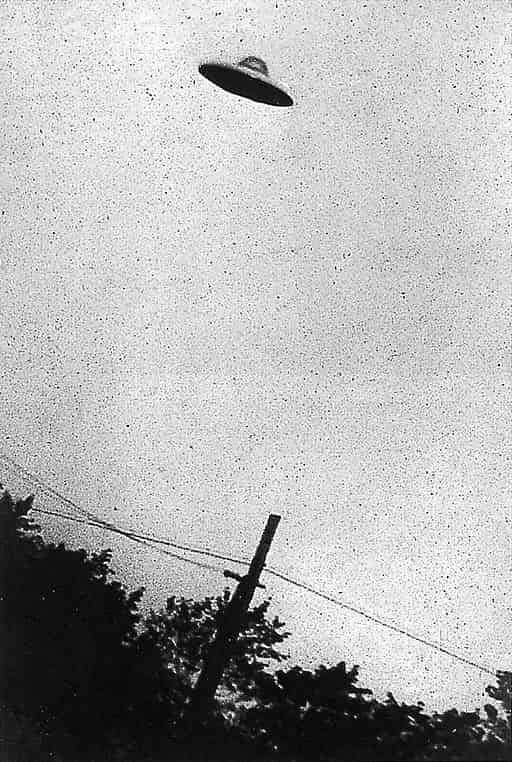UFO Unidentified Flying Object
For decades, UFO have defied all attempts at explanation. Hoaxes or misinterpretation of natural phenomena for some, signs of the presence of extraterrestrial life on Earth for others, UFOs are still scorned by science and often mistreated by the media today. However, every day witnesses report strange and sometimes even sensational aerial phenomena. How to sort the true from the false? What are the new theories on the subject? The mystery of unidentified flying objects is more relevant than ever.
In the United States, a crowd of UFOs in the midst of a pandemic
More and more Americans are reporting the presence of unidentified flying objects. In 2020, more than 7,200 UFOs were sighted in the United States. An increase in figure compared to previous years.
This has something to dream of lovers of science fiction. 7,200 UFOs were sighted in the United States in 2020, according to data from the National UFO Reporting Center, an American organization that lists unexplained celestial phenomena. This figure is up more than 1,000 occurrences from previous years, according to the New York Times.
Lights, sparkles, traces of light… In New York alone, the number of unidentified flying objects has doubled. But according to specialists, “this trend is not necessarily linked to an alien invasion”, continues the American daily. “You have to think of another invader: the coronavirus.”
Read also: Science Studies | Branches and Explanations
Since the start of the Covid-19 pandemic, Americans have “more time to look at the stars”. It is not by chance, the newspaper points out, if almost a quarter of UFO sightings took place in March and April 2020, “at a time when the containment measures were the most stringent” in the country. On this occasion, city dwellers who went to isolate themselves in the countryside were able to take advantage of the starry nights, less marked by light pollution.
A Pentagon UFO Study Unit
But for the paper, the public is also “more receptive” to the idea that UFOs have existed, since the establishment in August 2020 of an Unidentified Flying Objects Unit within the Pentagon. The latter was entrusted to the US Navy, which had already been working on the subject for several years. Objective: “to better understand and better understand the nature and origin” of unidentified aerial phenomena.
The New York Times recalls that in April of the same year, the Pentagon declassified three videos of a UFO, filmed off the coast of California by the US Navy. These images had first leaked onto the internet, rekindling the interest of the general public. A UFO report is also due to emerge, spearheaded by former President Donald Trump. This note will then be made public by the American authorities.
In the pages of the New York daily, several enthusiasts rejoice at this renewed interest. They see it as a sign that their observations will now be taken seriously. Because a UFO does not necessarily have links to extraterrestrial life, say those interviewed by the New York Times. “It’s just a celestial phenomenon that has not yet been identified.”
Ufology
Ufology is a discipline that consists of collecting, analyzing and interpreting data relating to the phenomena of unidentified flying objects (UFOs), for example oral or written testimonies, photographs, or traces on the ground.
The English acronym UFO (for “unidentified flying object), rendered by” ovni “in French, appears in some documents of the United States Air Force from the end of 1947 even if many authors attribute the invention of the term to Captain Edward J. Ruppelt, (first director of Project Blue Book) in 1952, to replace the popular expression of “flying saucer” (“flying saucer”). The term “UFO” gave the neologism ufology, rendered in French by the layer “ufology”. Ufology therefore designates a priori any research devoted to UFOs. In fact, the expression often relates to the discipline as it was developed by amateurs who were interested in UFOs from the beginning of the 1950s. Studies carried out in 1947 by the United States Air Force -Unis can be described as ufological, but in fact it is quite rare.
Likewise, military investigators are rarely qualified as ufologists. The same goes for investigators who may have worked for the Condon commission or for the National Center for Space Studies in France, for example. Ufologists are therefore mainly amateurs. And when some of them are also professional scientists, they are private ufologists. Likewise, a distinction exists between ufologists and certain authors and / or enthusiasts who have been able to defend theories considered marginal. We sometimes speak of “saucerists”, in reference to flying saucers.
Ufology is divided into several “schools” or currents. Initially, in the 1950s, most of the people who would later be qualified as “ufologists” were of the opinion that flying saucers (the term “UFO” began to spread in the United States from 1956 onwards). and in France from the 1970s) are of extraterrestrial origin (we then say “interplanetary”). In the 1950s, some saucer enthusiasts evoked more marginal theories (hollow earth, parallel universes, etc.). From 1977, a skeptical current, which explains UFOs as misunderstandings, made its appearance. We are talking about the socio-psychological model of the UFO phenomenon. Around the same time, other authors offer a parapsychological explanation.
Sources: PinterPandai, Centre of Excellence, Britannica, The Guardian, CBS News, The New York Times
Photo credit: Wikimedia Commons
Photo explanations: Photograph of an alleged UFO in New Jersey – taken on July 31, 1952.
UFO Investigation in Brazil | The Operation Saucer (Operação Prato), military unsolved mysteries



